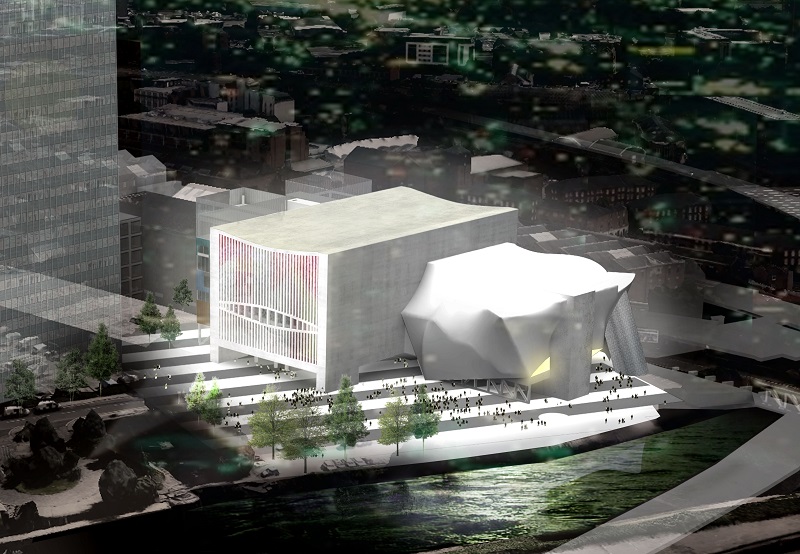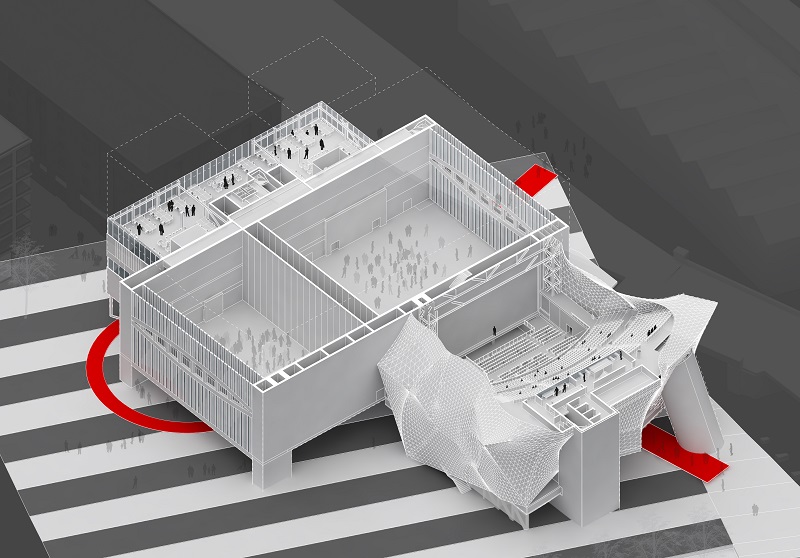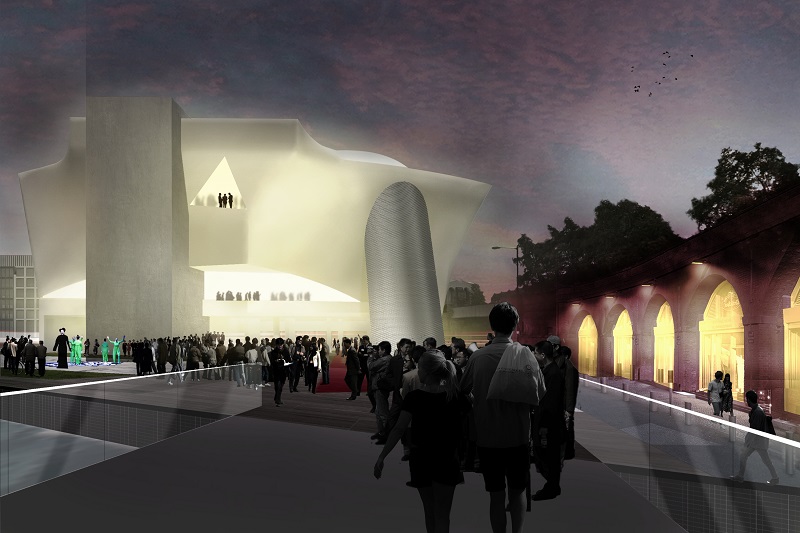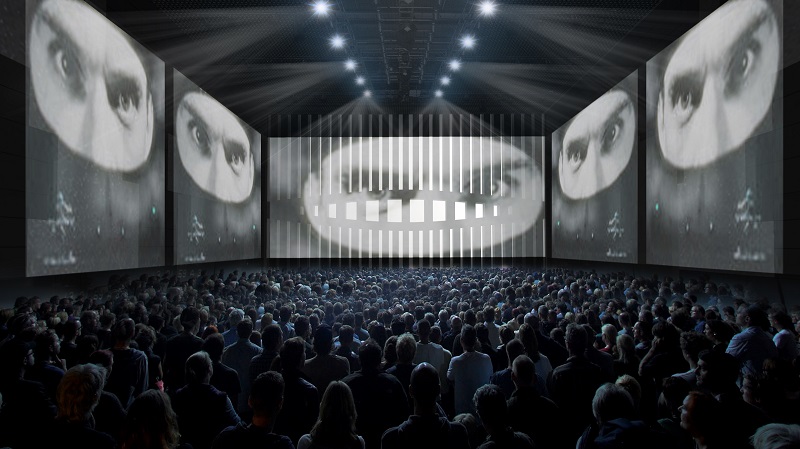Factory Manchester
In January 2017, Manchester City Council granted planning permission to Factory, a flagship cultural venue for the North of England.
The building has been designed by Rem Koolhaas’ architectural practice Office for Metropolitan Architecture (OMA), and will be their first major public building in the UK.
Factory is intended to be a groundbreaking new venue that forms part of the vibrant new St. John’s neighbourhood currently being developed by Allied London on the site of the former Granada TV Studios.
Manchester International Festival (MIF) will operate Factory, which will offer the broadest range of art forms and cultural experiences, including dance, theatre, music, opera, visual arts, spoken word, popular culture, and so on. Artists from around the world will be invited to create new work in the building.
It is anticipated that Factory will accelerate economic growth in the region, create or support almost 1,500 full-time jobs, and add £1.1 billion to the city’s economy over a decade.
It is hoped that it will reduce the dependency on London as the provider of creative industries training and employment. It will develop partnerships with the city’s leading higher education institutions and will further support the city’s drive for high-calibre graduate talent retention through job creation.
Matt Hancock, Minister of State for Digital & Culture said: “I want to blast open access to the very best world-class art and culture we have to offer in this country. So we're investing £78 million into Factory in Manchester that will provide a further boost to the brilliant arts, culture and technology scene in the North. On top of that, it will also help local tourism, generate jobs and provide training opportunities for the next generation of British creatives.”
Tom Bloxham, Chairman, Manchester International Festival (MIF) said: "This is a great show of confidence in the cultural future of the North. In just five festivals Manchester International Festival has established itself as one of the major international arts festivals, and we are delighted to now be able to add to the city’s and the country’s cultural offer all year round through our programming at Factory.”
Construction is due to begin in Spring 2017, and completion is expected in 2019.
Images © OMA.
[edit] Related articles on Designing Buildings Wiki
- Building of the week series.
- CCTV Headquarters.
- China Philharmonic Hall.
- London Design Museum.
- Manchester Civil Justice Centre.
- National Centre for the Performing Arts, Beijing.
- Niteroi Contemporary Art Museum.
- Our Town Hall, Manchester.
- Property development and music.
- Sage Gateshead.
- Trinity Islands, Manchester.
Featured articles and news
RTPI leader to become new CIOB Chief Executive Officer
Dr Victoria Hills MRTPI, FICE to take over after Caroline Gumble’s departure.
Social and affordable housing, a long term plan for delivery
The “Delivering a Decade of Renewal for Social and Affordable Housing” strategy sets out future path.
A change to adoptive architecture
Effects of global weather warming on architectural detailing, material choice and human interaction.
The proposed publicly owned and backed subsidiary of Homes England, to facilitate new homes.
How big is the problem and what can we do to mitigate the effects?
Overheating guidance and tools for building designers
A number of cool guides to help with the heat.
The UK's Modern Industrial Strategy: A 10 year plan
Previous consultation criticism, current key elements and general support with some persisting reservations.
Building Safety Regulator reforms
New roles, new staff and a new fast track service pave the way for a single construction regulator.
Architectural Technologist CPDs and Communications
CIAT CPD… and how you can do it!
Cooling centres and cool spaces
Managing extreme heat in cities by directing the public to places for heat stress relief and water sources.
Winter gardens: A brief history and warm variations
Extending the season with glass in different forms and terms.
Restoring Great Yarmouth's Winter Gardens
Transforming one of the least sustainable constructions imaginable.
Construction Skills Mission Board launch sector drive
Newly formed government and industry collaboration set strategy for recruiting an additional 100,000 construction workers a year.
New Architects Code comes into effect in September 2025
ARB Architects Code of Conduct and Practice available with ongoing consultation regarding guidance.
Welsh Skills Body (Medr) launches ambitious plan
The new skills body brings together funding and regulation of tertiary education and research for the devolved nation.
Paul Gandy FCIOB announced as next CIOB President
Former Tilbury Douglas CEO takes helm.
UK Infrastructure: A 10 Year Strategy. In brief with reactions
With the National Infrastructure and Service Transformation Authority (NISTA).


























